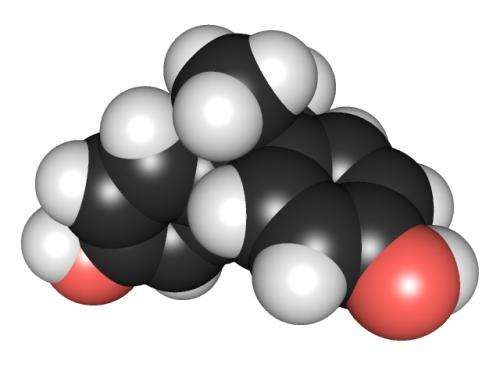Catalysts Efficiently and Rapidly Remove BPA from Water
Published on by Water Network Research, Official research team of The Water Network in Academic
Carnegie Mellon University chemist Terrence J. Collins has developed an approach that quickly and cheaply removes more than 99 percent of bisphenol A (BPA) from water .
BPA, a ubiquitous and dangerous chemical used in the manufacturing of many plastics, is found in water sources around the world.

3D chemical structure of bisphenol A. Credit: Edgar181 via Wikimedia Commons
In a paper published in Green Chemistry, Collins' research team and collaborators at the University of Auckland and Oregon State University also compiled evidence of BPA's presence in a multitude of products and water sources, as well as the chemical's toxicity. The research team builds a strong case for the need to effectively remediate BPA-contaminated water, especially industrial waste streams and landfill runoff, and they offer a simple solution.
BPA is a chemical used primarily in the production of polycarbonate plastic and epoxy resins. Its use is so widespread -- BPA can be found in products from DVDs and eyeglass lenses to cash register receipts -- to which people and wildlife are regularly exposed.
BPA is dangerous because it mimics estrogen, a naturally occurring hormone, and can affect the body's endocrine system. Studies in fish, mammals and human cells have shown that BPA adversely affects brain and nervous system development, growth and metabolism, and the reproductive system.
Collins' team offers a simple, effective and cheap cleanup solution. Their system involves a group of catalysts called TAML activators, small molecules that mimic oxidizing enzymes. When combined with hydrogen peroxide, TAML activators very effectively break down harmful chemicals in water.
In the current 25-page paper, the researchers demonstrate the efficacy and safety of TAML activators in breaking down BPA. Adding TAMLs and hydrogen peroxide to water heavily contaminated with BPA resulted in a 99 percent reduction of BPA within 30 minutes at near neutral pH, which is the pH norm for wastewater treatment.
TAML treatment at this pH caused BPA to assemble into larger units called oligomers, which clump together and precipitate out of the water. According to Collins, the oligomers could be filtered and disposed of in a BPA water treatment facility. Most importantly, extensive studies by Collins and his collaborators found that the oligomers are themselves not harmful. The nature of the bonds that stick the BPA molecules together doesn't allow the oligomers to revert to BPA.
To ensure the safety of the decontaminated water, including the oligomers, the researchers tested it with Tiered Protocol for Endocrine Disruption (TiPED) assays. They found that the TAML-treated BPA water did not show estrogen activity or cause abnormalities in yeast and developing zebrafish embryos.
The researchers also tested the efficacy of TAML treatment on BPA-laden water at a pH of 11. At this higher pH, there was a greater than 99.9 percent reduction in BPA within 15 minutes. In contrast with pH 8.5 treatment, the BPA molecules were destroyed and no oligomers were detected.
Read full article: Phys.org
Media
Taxonomy
- Drinking Water Security
- Treatment
- Treatment Methods
- Decontamination
- Drinking Water Treatment
- Filtration
- Contaminant Removal
- Filtration